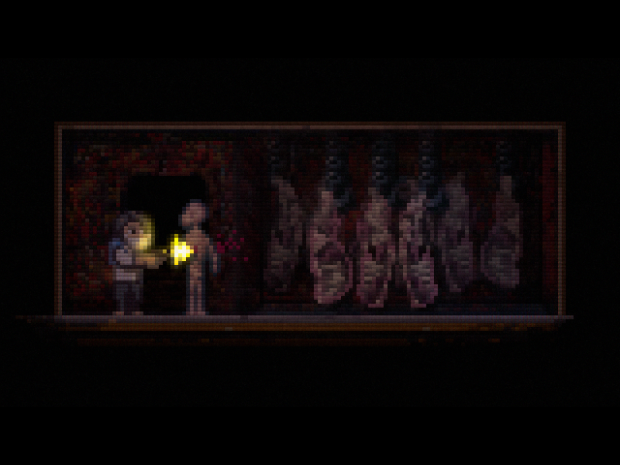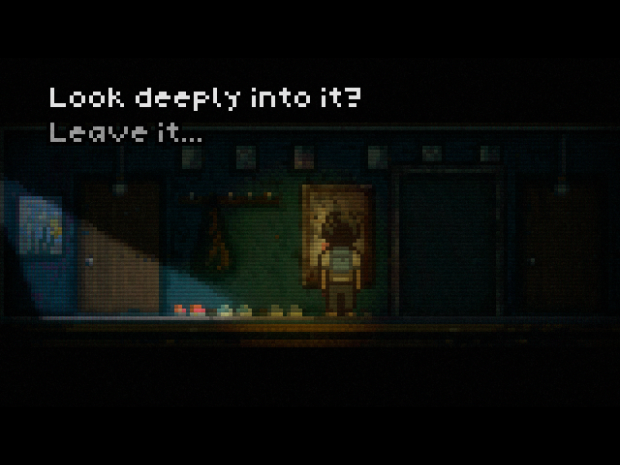Lone Survivor: The Directors Cut Review
As you open that nearby door, a feeling of dread comes over you. Will certain death be behind it, or will a tin of beans await you as you risk life and limb in this godforsaken world? Jasper Byrne’s Lone Survivor was released last year on PC and Mac, and was a wonderful throwback to a genre that seemed to be fading away in favour of shoot-outs and explosive gameplay. Since then, survival horror’s renaissance has been evident on PC with a considerable number of indie titles bringing fear back into the fold and allowing players to assume the role of someone who isn’t that prolific with a weapon in their hands.
The latest in a very long line of PC games from last year to make the jump to the PlayStation platform, Lone Survivor: The Director’s Cut has added new items, locations and a lot of different endings to the mix. You battle your own mindset throughout Lone Survivor, as your decisions really do affect the unstable protagonist, aptly named “You”.
The opening sequence isn’t much different to what many have seen before, as the on-edge lead character wakes up in an apartment that isn’t his, while the world around him is no longer inhabited by mankind, but by shambling creatures that resemble some form of alien/zombie hybrid. Attempting to leave his building and get out of the city, the mentally unstable protagonist comes across a plethora of puzzles and situations that are, in many cases, an homage to older games in the genre. Silent Hill is a constant comparison piece and the nods to that series are evident, along with the similar tension-building atmosphere.
Pixelated art is certainly becoming exhausted in the independent space, but Lone Survivor’s muddy art style and terrific use of scratching and booming sounds work perfectly to craft this menacing world. One of Lone Survivor’s greatest strengths is the stress it puts you under; it’s an achievement that cannot be understated. The 8-bit style isn’t something that’s normally associated with horror games today, but Lone Survivor’s look compliments the tone. It’s as if you’re being lulled into a false sense of security.

Lone Survivor is made up of larger areas that contain a number of doors, which, once entered, may leave you in peril as a monster instantly attacks you, or may have you thanking your lucky stars as your risk is rewarded with a wanted item. The enemies are the typical, aimlessly scurrying foes that, upon seeing you, will incessantly attack until you’re no longer breathing. However, you don’t always have to take them head-on and can instead go for a safer approach and hide in the shadows. Rotting meat can be obtained across the world and used to lure enemies away from their positions. There are also crevices in some of the walls that can be used as hiding places to get past the unrelenting foes whilst they’re either chowing down on some gone-off produce or simply looking the other way.
Like any good game where survival is key, ammo isn’t a plentiful resource, so this alternate approach is a must. For instance, one of the first enemies you encounter is shuffling along in a hallway, in front of a hiding spot. Upon placing some meat at one end of the gaping crack in the wall, I was able to hop in and amble across, while the faceless foe was inhaling some feed. The monsters don’t vary all that much, but their behavioural patterns can be known to change and lead to some panic-inducing moments and trigger-happy shooting, in a world where that’s a no-no. The more aggressive approach is also reminiscent of old survival horror games as, once your handgun is equipped, you can’t turn around. So, if a monster is approaching you from the right and you decide to pull out your firearm and let rip, you can’t instantly look to your left. Movement isn’t locked, though, and the main character isn’t normally overwhelmed by adversaries, so this isn’t an issue.

Your apartment is your safe haven where the evils of the outside world can’t touch you. You can go for a snooze (save your game), or you can stock up on supplies and cook up a storm in the kitchen, if you have the relevant utensils like a saucepan, for example – which must be gathered in-game. Your fridge is a constant source of the well-past-date foodstuffs and your bathroom sink is regularly full of pills, which is where things go down a rabbit-hole of despair. Defined by colour, the red pill is a source of energy for the character and, conversely, the blue and green pills drain you and initiate dream sequences when asleep.
One will see the protagonist speaking with a man wearing a cardboard box on his head, while the other takes place on a theatre stage. These are never fully explained, even at the conclusion, and although interpretation is something that is more than welcome, some more clarification would’ve made the experience more satisfying. Taking drugs is completely optional and these dreams/nightmares – depending on your perspective – do have their advantages as the Lone Survivor will be rewarded with certain items such as ammo, or batteries for his trusty flashlight.
With resources so scarce, it’s not recommended to have your torch be an ever-glowing light-source. The zombie-like creatures’ sight is obviously better when a bright beam is shining in their eyes, so it’s sometimes better to wander in a dim natural light – even if that means your heartrate is increased, ten-fold. As well as rotting meat, you will have to eat your own grub and you will be reminded of this, constantly. Constantly. In brief thoughts, the protagonist will state that he is hungry or sleepy and it can become annoying. You would think that some form of meter on-screen would have gotten around this issue, as the regularity of the prompts is irritating.

That isn’t the biggest drawback, though. Every large area of Lone Survivor has its own map, which displays pathways and rooms in a top-down fashion. As you encounter locked doors, or areas of interest, the map is marked in order to be referenced later on. But with the game occurring on a 2D plane, you will often get lost and go in and out of doors as if you’ve just stepped out of the Mystery Machine. Making sense of the building’s floor plans is very difficult when both perspectives are different. There’s one particular chase sequence that happens later on in Lone Survivor where you must outrun a behemoth and also navigate your way through numerous gateways and corridors. Due to the unclear nature of the map, infuriating death is almost guaranteed here and, sadly, exploration is hindered throughout.
VERDICT: There’s no doubt that, in a time where horror fans are crying out for titles that resemble a more considered and spooky approach, Lone Survivor sits near the top, along with the plethora of games of this ilk from the past 18 months. Curve Studios have helped adapt Jasper Byrne’s effort perfectly for both PS3 and Vita, giving console gamers a chance to witness one of the creepier and more unsettling examples of the genre in quite some time. Map issues notwithstanding, Lone Survivor continues Sony’s desire to make the PlayStation brand synonymous with indie games.

VERY GOOD. An 8/10 is only awarded to a game we consider truly worthy of your hard-earned cash. This game is only held back by a smattering of minor or middling issues and comes highly recommended.




